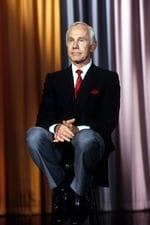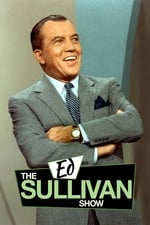Información personal
Conocido por Interpretación
Créditos conocidos 4
Sexo Masculino
Fecha de nacimiento 4 de mayo de 1928
Fecha de defunción 23 de agosto de 2006 (78 años)
Lugar de nacimiento Québec, Canada
También conocido como
- -
Puntuación del contenido
100
¡Sí! ¡Buena pinta!
Iniciar sesión para informar de un problema
Biografía
Already a band leader in his native land by his early teenage years, trumpeter Ferguson played in the bands of Boyd Raeburn, Jimmy Dorsey and Charlie Barnet in the 40s. His breakthrough into public consciousness came in 1950 when he joined Stan Kenton, electrifying audiences with his high-note playing. Unlike many other high-note trumpeters, Ferguson proved that it was possible to actually play music up there rather than simply make noises. However, it is possible that not all his fans appreciated the skills he was demonstrating. After leaving Kenton in 1953, Ferguson worked at Paramount studios in Los Angeles before turning to band leading, sometimes with a big band, at other times with a small group. Skillful use of arrangements often allowed the Ferguson bands to create an impression of size; the 12-piece band he led at the 1958 Newport Jazz Festival had all the power and impact of many groups twice its size. In the late 60s, Ferguson moved to the UK, where he formed a big band with which he toured extensively. In the USA again during the 70s, he moved into jazz-rock and reached a new audience who found the music and the flamboyance with which it was presented extremely attractive. During the 80s, Ferguson formed the funk band "High Voltage" before returning to jazz with the big band-orientated "Big Bop Nouveau". Ferguson also plays several other brass instruments with considerable skill, but it is as a trumpeter that he has made his greatest impact. His technical expertise on the instrument has made him a model for many of the up-and-coming young musicians.
Already a band leader in his native land by his early teenage years, trumpeter Ferguson played in the bands of Boyd Raeburn, Jimmy Dorsey and Charlie Barnet in the 40s. His breakthrough into public consciousness came in 1950 when he joined Stan Kenton, electrifying audiences with his high-note playing. Unlike many other high-note trumpeters, Ferguson proved that it was possible to actually play music up there rather than simply make noises. However, it is possible that not all his fans appreciated the skills he was demonstrating. After leaving Kenton in 1953, Ferguson worked at Paramount studios in Los Angeles before turning to band leading, sometimes with a big band, at other times with a small group. Skillful use of arrangements often allowed the Ferguson bands to create an impression of size; the 12-piece band he led at the 1958 Newport Jazz Festival had all the power and impact of many groups twice its size. In the late 60s, Ferguson moved to the UK, where he formed a big band with which he toured extensively. In the USA again during the 70s, he moved into jazz-rock and reached a new audience who found the music and the flamboyance with which it was presented extremely attractive. During the 80s, Ferguson formed the funk band "High Voltage" before returning to jazz with the big band-orientated "Big Bop Nouveau". Ferguson also plays several other brass instruments with considerable skill, but it is as a trumpeter that he has made his greatest impact. His technical expertise on the instrument has made him a model for many of the up-and-coming young musicians.
Interpretación
|
|||
|
|||
|
Sonido
|



